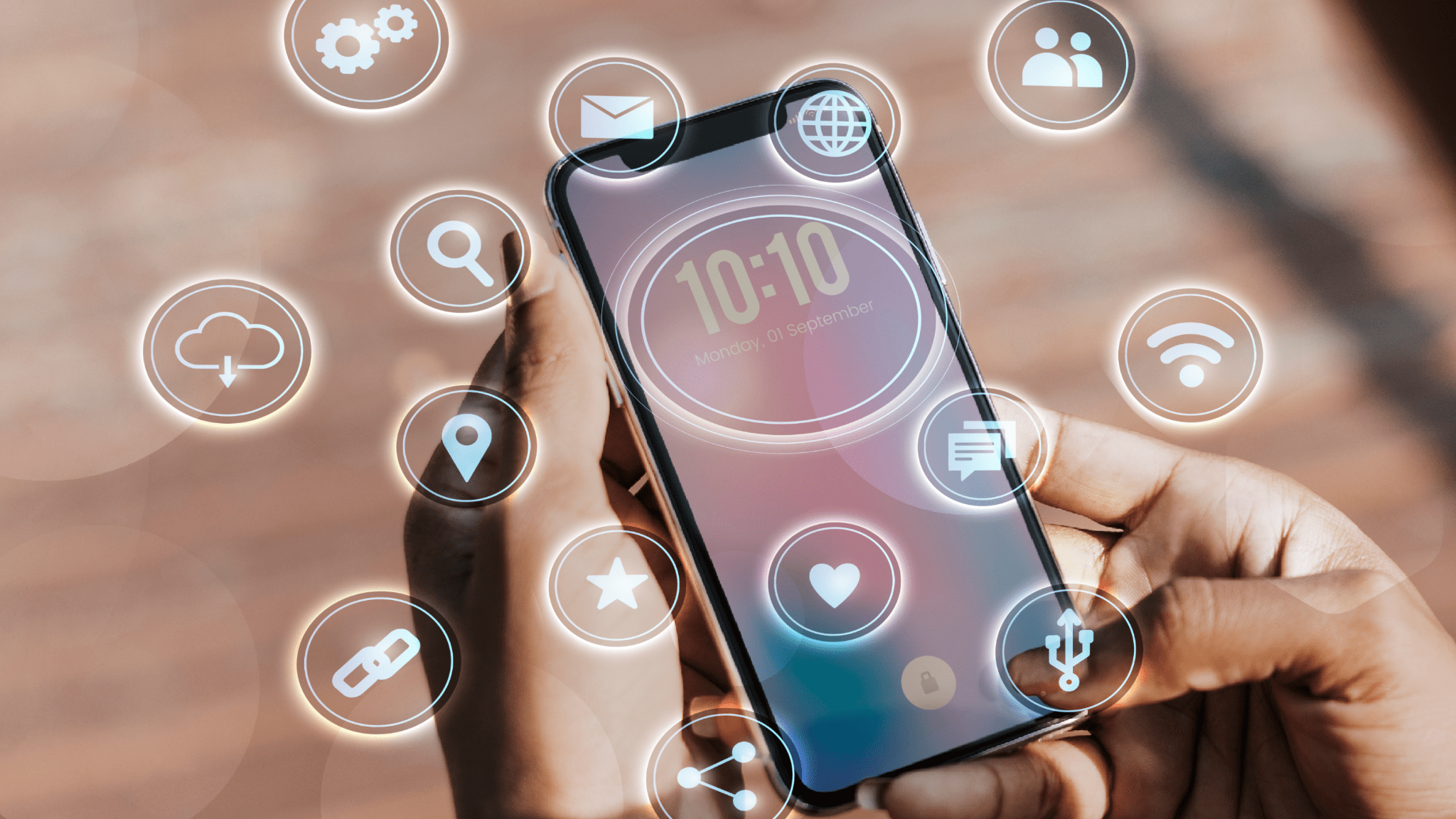Internet of things (IoT) connects physical devices to the internet which enables device monitoring and data analysis. Some physical devices that collect data such as thermometers, motion detectors and cameras. Let’s grab into depth how these IoT applications work, how it benefits business, and what are its development processes.
What is IoT app development and how does it work?
As we are getting digitized day by day, we can see that every object is connected with the internet, such as smart home speakers, wearables, smartwatches and so on.
Internet of Things (IoT) application development significantly reduces manual efforts by automating the tasks and processes through connected devices with real time data analysis. Automation also reduces the risk of human errors in tasks that are prone to mistakes when human interventions are involved.
IoT applications can personalize user experiences by gathering data on users preferences and behaviours, like it delivers recommendations to users on past history searches and behaviours.
How does it work?
IoT app development includes step by step process, first they collect data from devices from the physical environment like temperature and location. Secondly, after gathering data they transmit the data over a network by using WiFi, cellular etc to a central system (like cloud or edge).Thirdly, the central systems than analyses the data, often using cloud based platforms (google drive, dropbox) and on that basis they identifies patterns. Lastly, on the basis of analysis, the systems can trigger behaviour and present information to users through a mobile or web app.
Components of IoT
IoT works on numerous key components that work together to collect, process, and utilize data from the physical world. Let’s know what are some key components of IoT;
Sensors and Devices:
These are devices that gather information from the environment which can be a thermometer to pressure sensors. They are responsible for gathering information in the form of raw data which will be used by IoT systems in future.
Connectivity:
This component ensures that all the gathered data from the physical environment has been transferred to other parts of systems. Using numerous technologies like bluetooth and WiFi.
Data Processing:
After processing, valuable insights are extracted from the sensor data. This can be done in the cloud or locally (at the edge). Cloud processing can manage complicated analytics and massive data volumes, while edge processing enables quicker reaction times and less bandwidth use.
Cloud Platforms:
The infrastructure needed to store, manage, and analyze the data gathered by Internet of Things devices is provided by cloud platforms(google drive, drop box).
User interfaces:
Through these interfaces, users can access data, communicate with the IoT system, and possibly even control equipment.Such as Voice assistant and chatbots.
Features of IoT applications
It offers numerous features which enhances IoT applications:
Real Time data monitoring:
Real time data monitoring allows real time data insights which enables immediate identification of bottlenecks, and optimized performance. It includes faster decision making, improved efficiency and improved user experiences.
Remote control:
It enhances IoT applications by allowing users to manage and interact with devices from any corner of the world which results in increased convenience, efficiency and control.
Automation:
Automation is significantly responsible for reducing human interventions by enabling improved efficiency, scalability and responsiveness.
Data analysis and Insights:
It enhances IoT applications by transmitting raw data into actionable intelligence, it increases decision making process, efficiency and better overall performance across various applications.
Integrations with other systems:
For a more thorough understanding of operations, it can interface with other platforms and apps, including CRM or ERP systems.
Business Benefits of IoT app development
It offers numerous benefits of IoT app development:
Increased operational efficiency:
IoT applications can track and manage numerous aspects of business operations. IoT apps can automate repetitive tasks, which reduces human interventions which leads to more productivity and reduces costs.
Increased Decision Making:
As gathering information from the physical environment it gives raw data which provides real time data and insights, which enables businesses to make informed decisions based on accurate information.
Enhanced Customer Experience:
IoT enables businesses to create more personalized and engaging experince for their customers. As, it introduces chatbots and personal assitants where users can interact from anywhere for 24*7.
New business models and revenue streams:
Businesses may now provide subscription-based services, such as remote repair and monitoring, IoT, creating steady revenue streams.
Cost Reduction:
Reduced operating costs can be achieved through automation, predictive maintenance, and better resource management.
Challenges and Considerations
The creation of IoT applications poses particular difficulties and necessitates careful thought at every turn.
Security
It is crucial to maintain the data information, which usually are experienced in transmission of data from one device to another, which risks cyberattacks. It is a responsible factor to securing the data at every stage from device authentication to encrypted transmission of data.
Development Complexities
IoT surrounds a wide range from software to hardware which makes it challenging to develop mobile apps that widely interact with all of them.
Interoperability
It’s still difficult to make sure devices made by various manufacturers can connect with one another.
Power Efficiency
IoT devices are often relied on battteries with limited capacity that may not provide a continuous power supply, which is a great challenging issue faced by IoT devices, frequently battery changers can be cost effectively.
Data Management:
IoT app development faces challenges in managing and storing large sets of data. These data are often unstructured which requires correlation with other data sources to provide context decision making.
Conclusion
IoT app development is reshaping business by connecting devices, data, and users in various ways. IoT devices store and manage a large number of data sets which enables real time data insights which directly helps in more productivity and increased decision making. IoT application investment is now strategic rather than optional. The correctIot solutionmay spur innovation, cut expenses, and open up new revenue streams for businesses in industries including manufacturing, healthcare, logistics, and smart home automation.
